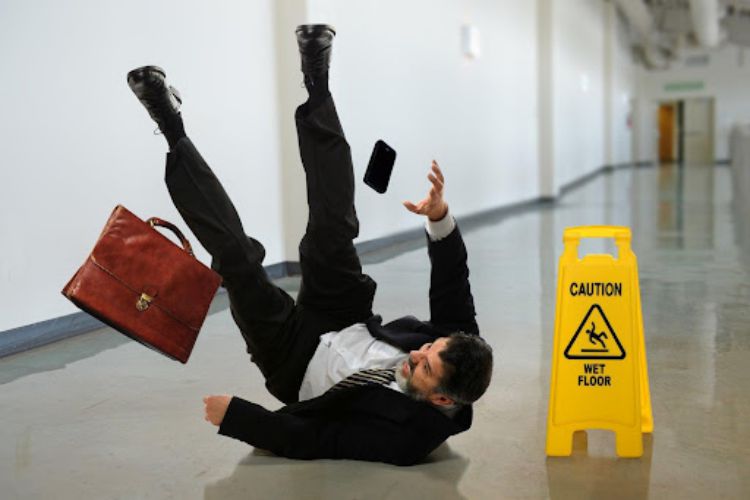 Slip and fall accidents are all too common and can result in serious injuries requiring medical attention. However, many slip and fall incidents are preventable when property owners and managers take appropriate safety precautions. As a concerned citizen, it pays to be aware of common slip and fall hazards so you can avoid injury and protect your well-being. We’ll discuss some seven slip-and-fall causes you need to know about.
Slip and fall accidents are all too common and can result in serious injuries requiring medical attention. However, many slip and fall incidents are preventable when property owners and managers take appropriate safety precautions. As a concerned citizen, it pays to be aware of common slip and fall hazards so you can avoid injury and protect your well-being. We’ll discuss some seven slip-and-fall causes you need to know about.
Table of Contents
7. Lack of Handrails
Finally, the absence of sturdy handrails along steps, on elevated walkways, or on ramps is another frequent contributor to slip and fall accidents. Handrails provide balanced support and assistance when necessary, like during inclement weather or when carrying items that limit vacant hands. They’re especially important for children, elderly individuals, or anyone with limited mobility.
6. Ice and Snow
During winter months, snow and ice buildup on walkways, steps, and parking lots is an all-too-common cause of injury-inducing slips. Freezing precipitation that isn’t promptly addressed becomes a safety issue, especially as melting accumulates in hardened sheets or tree shade preventing melting altogether.
5. Poor Lighting
Inadequate lighting creates visibility issues, leading to accidents. Both artificial and natural light sources require routine maintenance, cleaning, and replacements to provide sufficient illumination. Shadowy areas and blockages cut off light sources and hide potential hazards.
4. Loose Flooring
Floor tile or wood planking that is not properly affixed or sustained creates tripping risks that qualified contractors or maintenance teams must address. Loose floor gratings, hatches, and manhole covers also warrant routine inspection and securing according to guidelines.
3. Uneven Walking Surfaces
Another ubiquitous risk is uneven walking surfaces. This includes things like broken or uneven pavement, cracks in sidewalks, loose floor tiles, or changes in ground levels. The problem with these irregularities is they disrupt normal walking patterns and can easily trip someone up.
2. Debris and Obstacles
Leaving debris or objects strewn about is a surefire way to invite slip-and-fall accidents. Common culprits involve things falling or being left in high-traffic areas like stairs, aisles, entryways, and exits. Examples might be boxes, tools, snow/ice clumps, electric cords, or fallen objects.
1. Wet Floors
Nobody argues that wet floors aren’t treacherous surfaces. Whether resulting from rainwater tracked inside or custodial duties, wet floors are a leading factor in slip and fall accidents. Water drastically reduces available traction, so even minor slips can lead to nasty spills or impact injuries.
Proper Recourse: Connecting with a Slip and Fall Accident and Injury Lawyer
While taking preventative measures and exercising caution are important to avoid slip and fall accidents, injuries may still occasionally occur despite one’s best efforts. If you have sustained harm from a fall due to no fault of your own, seeking legal counsel from an experienced slip and fall accident and injury lawyer could be worth considering.
A qualified slip-and-fall accident and injury lawyer can review your case’s details, determine if you may be eligible for compensation, and advise you on the best path forward to recover costs associated with medical bills and lost wages.






